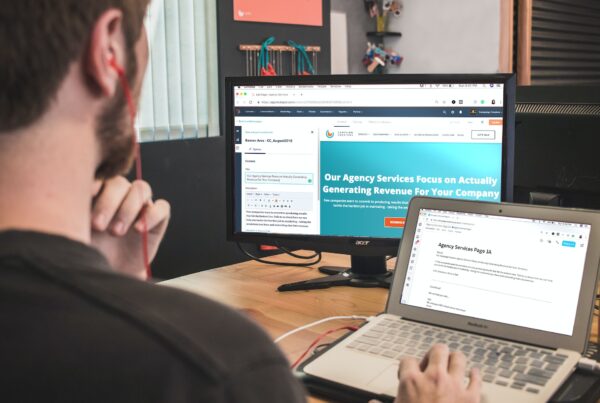
As the world increasingly embraces digital technology, websites have become the primary touchpoint for businesses and organizations to engage with diverse audiences. However, the ubiquity of this digital shift also brings forth a critical responsibility—ensuring that websites and applications are accessible to everyone, including individuals with disabilities.
With that in mind, the significance of accessibility testing transcends mere compliance with legal requirements; it encompasses the moral imperative of cultivating an inclusive digital landscape that caters to the diverse needs of all users, including those with disabilities.
So in this article, we delve into the compelling reasons why website accessibility testing is an absolute must in the contemporary digital sphere, from legal and ethical considerations to enhancing user experience and market reach.
What is Website Accessibility Testing?
Website accessibility testing is the process of evaluating a website’s design, content, and functionality to ensure that it meets the needs of users with disabilities. This process involves checking whether a website follows the four principles of accessibility:
- Perceivability: Information and user interface components must be presented in ways that users can perceive. This means that the information should not be invisible to any of their senses.
- Operability: Users must be able to operate the interface and navigate through the website easily. This means that the website should be compatible with various assistive technologies and should not require complex gestures or interactions that might be difficult for users with disabilities.
- Understandability: Users must be able to understand the information and the operation of the user interface. This means that the content should be clear, concise, and presented in a logical order.
- Robustness: The website must be accessible using a wide range of technologies, including older technologies and assistive devices. This means that the website should be flexible and adaptable to various user needs and preferences.
Different WCAG Accessibility Testing
The Web Content Accessibility Guidelines (WCAG) 2.1 is a set of recommendations and guidelines developed by the World Wide Web Consortium (W3C) to help make web content more accessible to people with disabilities. The guidelines are organized into three levels of compliance: Level A, Level AA, and Level AAA.
1. WCAG 2.1 Level A: Minimal Compliance
Level A compliance represents the minimum level of accessibility that all websites should aim to achieve. Websites that meet Level A requirements are accessible to some users with disabilities, but there may still be barriers that make it difficult for them to access and use the site effectively.
Some examples of Level A requirements include the following:
- No keyboard traps;
- Ability to navigate with a keyboard;
- Non-text content alternatives;
- Video captions;
- Meeting two senses;
2. WCAG 2.1 Level AA: Acceptable Compliance
Level AA compliance represents a higher level of accessibility and is the recommended level for most websites. Websites that meet Level AA requirements are accessible to most users with disabilities and have addressed a broader range of accessibility issues.
On that note, the key examples of Level AA requirements include the following:
- At least 4.5:1 of color contrast;
- Adding alt-text for images to convey meaning;
- Consistent navigation elements;
- Accurate labeling;
- Screen reader capabilities for status updates;
- Logical order of headings;
3. WCAG Level AAA: Optimal Compliance
Level AAA compliance represents the highest level of accessibility and is considered the gold standard for website accessibility. Websites that meet Level AAA requirements are accessible to the greatest number of users with disabilities, including those with more severe impairments or using older assistive technologies.
With that in mind, a few examples of Level AAA requirements include the following:
- Sign language interpretation for audio or video content;
- Color contrast is at least 7:1;
- Timing is not an essential part of any activity;
- Context-sensitive help is available;
The Bottom Line
Ensuring that your website meets the various levels of WCAG compliance through rigorous accessibility testing can not only help you avoid potential legal issues, but also expand your reach to a broader audience, improve your brand reputation, and promote inclusivity.
By embracing accessibility testing, businesses and organizations can foster an inclusive digital environment that empowers individuals with disabilities and enables them to participate fully in the digital world.
At AllAccessible, we are proud to offer an accessibility audit tool for websites in New York. Our tool is designed to help businesses quickly and easily identify any existing accessibility issues, allowing them to make the necessary changes to bring their website into compliance. Check our ADA compliance scanner and start your FREE trial today!


